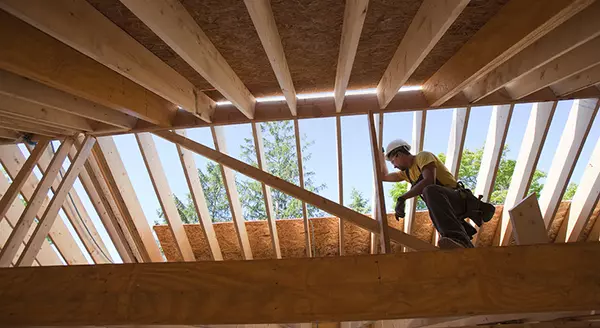
Law Will Impact Some Foreign-Buyer Purchases
Florida Realtors lawyers spoke to 6K+ members during a July 29 webinar, saying a new law impacting some property sales to certain foreign buyers goes into effect July 1. Some details are not yet clear, but a new disclosure will appear in FR/Bar, CRSP and other contracts on Sat., July 1, and buyers must sign a new affidavit.

Average Long-Term U.S. Mortgage Rate Rises to 6.71%
Freddie Mac: The 30-year FRM increased, snapping a three-week pullback from 6.79% on June 1, which was the highest level so far this year.

Where Will You Go If You Sell? Newly Built Homes Might Be the Answer.
Do you want to sell your house, but hesitate because you’re worried you won’t be able to find your next home in today’s market? You're not alone, but there’s some good news that may ease your worries. New home construction is up and is becoming an increasingly significant part of the housing inventory.That means when you go to put your house on the market this summer, considering newly built homes is crucial for expanding the options you’ll have for your next move.Near-Record Percentage of New Home InventoryNewly built homes today make up a near-record percentage of the total number of homes available for sale (see graph below):In fact, as the data shows, newly built homes now make up 31% of the total for-sale inventory. Over the past couple of decades, newly built homes made up an average of only around 13% of total housing inventory from 1983 to 2019.That means the percentage of the total available homes that are newly built is over two times higher than the norm.Why This Matters to You Overall, the supply of homes for sale is still low. And when there’s limited supply, it’s crucial to explore all of your available choices. New-home construction has emerged as a game changer with increasing inventory. Not to mention, recent data shows it’s gaining even more momentum as more newly built homes are underway and will be coming to the market in the months ahead.Robert Dietz, Chief Economist at the National Association of Home Builders (NAHB), highlights the importance of newly built homes for those looking to buy in today’s housing market. Dietz states:"With limited available housing inventory, new construction will continue to be a significant part of prospective buyers' search in the quarters ahead."Don’t overlook this growing market segment and risk missing out on great opportunities to find your ideal home. Since new home construction accounts for roughly 31% of total for sale inventory, you could be cutting nearly one in three options from your search if you don’t consider newly built homes. If you’re looking to make a move, a local real estate agent can help you sell your current house and explore newly built options in your area. They have the expertise you need to handle both sides of the process so you can move out of your current house and into your brand-new dream home.Bottom LineNow’s the time to sell your house and take advantage of the momentum that’s building in new home construction. Reach out to a trusted real estate agent who can guide you throughout the selling and buying process so you can make your transition to a newly built home a reality.

Lending Standards Are Not Like They Were Leading Up to the Crash
You might be worried we’re heading for a housing crash, but there are many reasons why this housing market isn’t like the one we saw in 2008. One of which is how lending standards are different today. Here’s a look at the data to help prove it. Every month, the Mortgage Bankers Association (MBA) releases the Mortgage Credit Availability Index (MCAI). According to their website:“The MCAI provides the only standardized quantitative index that is solely focused on mortgage credit. The MCAI is . . . a summary measure which indicates the availability of mortgage credit at a point in time.”Basically, the index determines how easy it is to get a mortgage. Take a look at the graph below of the MCAI since they started keeping track of this data in 2004. It shows how lending standards have changed over time. It works like this: When lending standards are less strict, it’s easier to get a mortgage, and the index (the green line in the graph) is higher.When lending standards are stricter, it’s harder to get a mortgage, and the line representing the index is lower.In 2004, the index was around 400. But, by 2006, it had gone up to over 850. Today, the story is quite different. Since the crash, the index went down because lending standards got tighter, so today it’s harder to get a mortgage.Loose Lending Standards Contributed to the Housing BubbleOne of the main factors that contributed to the housing bubble was that lending standards were a lot less strict back then. Realtor.com explains it like this: “In the early 2000s, it wasn’t exactly hard to snag a home mortgage. . . . plenty of mortgages were doled out to people who lied about their incomes and employment, and couldn’t actually afford homeownership.” The tall peak in the graph above indicates that leading up to the housing crisis, it was much easier to get credit, and the requirements for getting a loan were far from strict. Back then, credit was widely available, and the threshold for qualifying for a loan was low.Lenders were approving loans without always going through a verification process to confirm if the borrower would likely be able to repay the loan. That means creditors were lending to more borrowers who had a higher risk of defaulting on their loans.Today’s Loans Are Much Tougher To Get than BeforeAs mentioned, lending standards have changed a lot since then. Bankrate describes the difference: “Today, lenders impose tough standards on borrowers – and those who are getting a mortgage overwhelmingly have excellent credit.”If you look back at the graph, you’ll notice after the peak around the time of the housing crash, the line representing the index went down dramatically and has stayed low since. In fact, the line is far below where standards were even in 2004 – and it’s getting lower. Joel Kan, VP and Deputy Chief Economist at MBA, provides the most recent update from May:“Mortgage credit availability decreased for the third consecutive month . . . With the decline in availability, the MCAI is now at its lowest level since January 2013.”The decreasing index suggests standards are getting much tougher – which makes it clear we’re far away from the extreme lending practices that contributed to the crash.Bottom LineLeading up to the housing crash, lending standards were much more relaxed with little evaluation done to measure a borrower’s potential to repay their loan. Today, standards are tighter, and the risk is reduced for both lenders and borrowers. This goes to show, these are two very different housing markets, and this market isn’t like the last time.
Categories
Recent Posts










